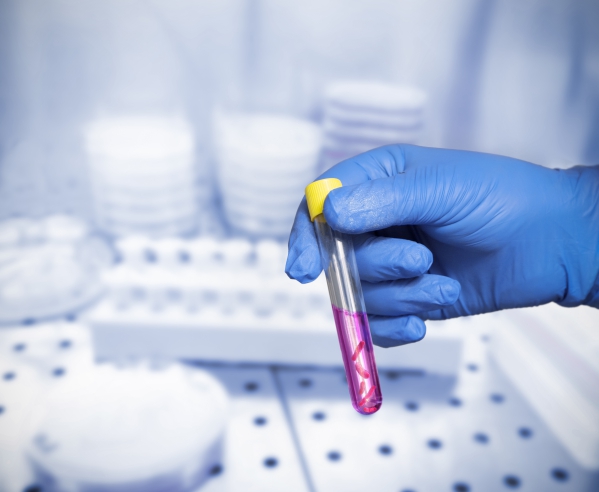What is multiple myeloma?
Multiple myeloma (MM) is a cancer of plasma cells- also known as white blood cells- in the bone marrow. Healthy plasma cells produce antibodies which help to fight infections in the body. In MM, these cells become cancerous, growing out of control to accumulate in the bone marrow. This leads to bone pain, inadequate number of healthy blood cells- white blood cells and red blood cells- and fractures. In addition, these cancerous plasma cells produce a large amount of abnormal proteins instead of helpful antibodies which damage the kidneys.
MM accounts for 10% of all blood cancers. In the United States, the American Cancer Society estimates that in the year 2020 around 32,000 new cases of MM will be diagnosed. Furthermore, around 12,800 deaths from MM are expected to occur in the year 2020. African Americans are most commonly affected by MM than whites or Hispanics. Men are more commonly affected than women. The peak age of people diagnosed with MM are 68 years for men and 70 years for women.
The treatment plan depends on the severity of your signs and symptoms. There are several treatment options available such as non-chemotherapy drugs, standard chemotherapy drugs, bone marrow (stem cell) transplantation and corticosteroids.
What are the causes of multiple myeloma?
The exact cause of MM is still unknown but there are several factors which may increase your risk of developing this condition and these include:

- Family history: Having a parent or sibling affected by MM increases your risk of developing it.
- Occupational or environmental causes: People working in the agricultural, petrochemical and food industry are at increased risk of developing MM. Farmers who use insecticides and herbicides are at risk. In addition, people who are exposed to benzene or other organic solvents are also at risk.
- Radiation: It was reported that atomic-bomb survivors were at increased risk of developing MM. 29 out of 109,000 survivors of the atomic bombing of Nagasaki during World War 2 died of MM between the 1950 and 1976.
- Race: Black people are more at risk of developing MM than other races.
- Sex: Males are more at risk of developing MM than females
- Age: As your age increases, your risk of developing MM increases as most people diagnosed with MM are above the age of 60 years.
The bone marrow produces blood cells such as white blood cells and red blood cells. MM begins when 1 white blood cells becomes abnormal which multiplies very quickly. These abnormal cells do not mature and accumulate within the bone marrow which will impair the production of healthy blood cells. White blood cells normally produce antibodies to help your body fight infections. However, these cancerous cells produce abnormal proteins which accumulate in the body and get clogged in the kidneys, causing kidney damage. In addition, your bones become weaker and are predisposed to fractures.

What are the signs and symptoms of multiple myeloma?
In early stages of the disease, there may not be any signs and symptoms. However, as the disease progresses, the following signs and symptoms may become apparent:
- Bone pain in the back or chest
- Nausea
- vomiting
- Fatigue
- Constipation
- Loss of appetite
- Weight loss
- Frequent and recurrent infections
- Confusion
- Excessive thirst
- Frequent urination
- Numbness in your legs
- Fractures of the vertebrae (bones of the spine)
- Coma
- Paleness
- Blurred vision
- Bleeding from nose and mouth
- Muscle weakness
There are other diseases or conditions which may resemble MM and these include:
- Malignant (primary) lymphoma of bone
- Monoclonal Gammapathies of Undertermined Significance (MGUS)
- Metastatic bone disease
- Waldenstrom Macroglobulinemia

Making a diagnosis
To make a diagnosis, your doctor will first take a detailed history from you to know more about your symptoms. After the history taking, your doctor will perform a thorough physical examination to look for signs of MM. Your doctor will order some tests to confirm the diagnosis and determine the severity of MM. These tests include:

- Complete blood count (CBC): A CBC is done to determine whether there is presence of anaemia (low red blood cell count), low platelet count or leukopenia (low white blood cell count).
- Erythrocyte sedimentation rate (ESR): ESR is a marker of inflammation in the body and is typically raised in MM
- Coagulation studies: This study is often abnormal in people with MM and causes bleeding problems.
- Blood and urine test for Monoclonal protein: The cancerous plasma cells produces an abnormal protein called monoclonal (M) protein which is also known as paraprotein or Bence Jones protein. These are found in the blood and urine of almost all people with MM which confirms the diagnosis.
- Bone marrow examination: This involves your doctor inserting a needle into your bone to obtain a collection of a small sample of bone marrow which will be analysed under the microscope to look for an abnormally high number of plasma cells (>10%). This procedure may be done in several different area as MM may affect the bone marrow of some bones but not others.
- Plain radiography of your bones: Plain radiography is the gold standard imaging procedure for staging newly diagnosed or relapsed MM. Radiographs of the skull- the most common site where findings of MM may be seen-, spine and long bones such as in the arms and legs. The findings include a distinct, round (lytic) areas which indicates bone erosion and thinning of the bones. In addition, fractures may also been seen in certain cases.
- Magnetic Resonance Imaging (MRI) scan: MRI scans of the spine is useful in detecting lesions within the spine. They may detect abnormalities when plain radiographs cannot. It is also helpful in assessing whether the spinal cord is involved or not.
- Low dose whole body Computed Tomography (CT) scan and combined positron emission tomography (PET)/CT scan: These scans may be useful in predicting the prognosis of the condition.


What are the treatments of multiple myeloma?
If there are no signs and symptoms, your doctor might not initiate any treatment but will monitor the disease progression closely. If there is signs and symptoms present, the following treatment options may be considered:
- Non-chemotherapy drugs: These drugs are used to specifically kill the cancer cells. Classes of this type of drug include immunomodulatory drugs (lenalidomide, pomalidmide and thalidomide), proteasome inhibitors (bortezomib, cardilzomib, and ixazomib), monoclonal antibodies (daratumumab and elotuzumab) and nuclear export inhibitor (selinexor). These drugs are often used in combination with corticosteroids such as dexamethasone or with standard chemotherapy drugs.
- Standard chemotherapy drugs: This class of drug stop or slow down the growth of cancer cells. It may completely stop the progression of the disease in some cases. Examples include melphalan, cyclophosphamide, dozorubicin, panobinostat and liposomal dozorubicin.
- Corticosteroids: This class of drug reduce inflammation and reduce the effects of your immune system. Examples include dexamethasone and prednisolone.
- Stem cell transplantation: Stem cell (bone marrow) transplantation can be done by obtaining the stems cells from donor or close relative but can also be obtained from your own body (autologous transplant). It will not cure the disease but may prolong life in some people. Most of the time, autologous transplant is used as it is safer.

What are the complications of multiple myeloma?
If MM is left untreated, the following complications may ensue:
- Frequent or recurrent infections
- Kidney failure
- Anaemia
- Fractures
- Bone pain
- Spinal cord compression- this leads to back pain, weakness and loss of sensations in the legs.
- Increased calcium level (hypercalcaemia): This may cause complications such as heart failure. Constipation, altered mental status, muscle cramps, increased thirst and urination.
Expectations (prognosis)
The prognosis mainly depends on the size of the tumour, degree of hypercalcaemia and severity of kidney problem amongst others. Unfortunately, the 5-year survival rate is 46.6%. In addition, infections are major cause of early death in MM; A United Kingdom study reported that 10% of people with MM dies within 60 days after diagnosis of MM and 45% of them died due to infections. Seeking medical advice early is key to prevent complications and increase your chance of controlling the disease.

Source:
J. Alastair, I. and Simon, M., 2016. Davidson's Essentials of Medicine. 2nd ed. London: ELSEVIER.
Parveen, K. and Michael, C., 2017. Kumar & Clarks Clinical Medicine. 9th ed. The Netherlands: ELSEVIER.
Shah, D., 2020. Multiple Myeloma: Practice Essentials, Pathophysiology, Etiology.
Rajkumar, V., 2020. Multiple myeloma treatment.
Rajkumar, V., 2020. Multiple myeloma symptoms, diagnosis, and staging.


